
|
You entered: total solar eclipse
 Solar Eclipse: A Composite View
Solar Eclipse: A Composite View
27.02.1998
Yesterday, the Moon's shadow reached out and touched the Earth, treating a large portion of the Western Hemisphere to an Eclipse of the Sun. This composite image combines pictures of the Sun made from both Earth and space.
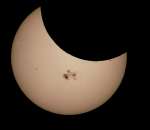 Sunspots and Solar Eclipse
Sunspots and Solar Eclipse
25.10.2014
A New Moon joined giant sunspot group AR 2192 to dim the bright solar disk during Thursday's much anticipated partial solar eclipse. Visible from much of North America, the Moon's broad silhouette is captured in this extreme telephoto snapshot near eclipse maximum from Santa Cruz, California.
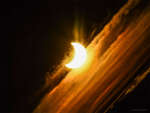 Partial Solar Eclipse over Argentina
Partial Solar Eclipse over Argentina
2.05.2022
What's happened to the Sun? Two days ago, parts of South America were treated to a partial solar eclipse -- where the Moon blocked out part of the Sun. The featured image shows an image of the partially eclipsed Sun through clouds as it was setting over Patagonia, Argentina.
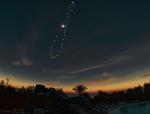 Tutulemma: Solar Eclipse Analemma
Tutulemma: Solar Eclipse Analemma
2.10.2007
If you went outside at exactly the same time every day and took a picture that included the Sun, how would the Sun appear to move? With great planning and effort, such a series of images can be taken. The figure-8 path the Sun follows over the course of a year is called an analemma.
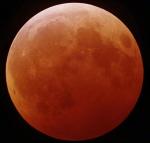 2001: A Total Lunar Eclipse
2001: A Total Lunar Eclipse
18.01.2001
The first and only total lunar eclipse for the year 2001 occured on the evening of January 9/10 as the full Moon glided through Earth's shadow. Unlike a total solar eclipse, a total lunar eclipse is visible for anyone on the night side of the planet during the event.
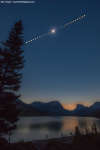 A Total Solar Eclipse over Wyoming
A Total Solar Eclipse over Wyoming
22.08.2017
Will the sky be clear enough to see the eclipse? This question was on the minds of many people attempting to view yesterday's solar eclipse. The path of total darkness crossed the mainland...
 A Total Eclipse of the Sun
A Total Eclipse of the Sun
11.03.1998
On February 26th, it was dark during the day. This total solar eclipse was the last visible from the Americas for this millennium. A total solar eclipse is exciting partly because it is so short.
 A Solar Eclipse Quilt
A Solar Eclipse Quilt
13.11.2012
Some people are so inspired by solar eclipses that they quilt. Pictured above is a resulting textile from one such inspiration. The 38x38 inch quilt offers impressions of a total annular eclipse, when the Moon is too far from the Earth to cover the entire Sun, witnessed in Spain in October of 2005.
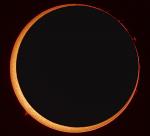 An Annular Solar Eclipse at High Resolution
An Annular Solar Eclipse at High Resolution
5.10.2005
On Monday, part of the Sun went missing. The missing piece was no cause for concern -- the Moon was only momentarily in the way. The event was not a total eclipse of the Sun for any Earth-bound sky enthusiast but rather, at best, an annular eclipse, where the Moon blocked most of the Sun.
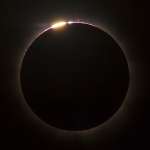 Solar Eclipse over Queensland
Solar Eclipse over Queensland
15.11.2012
This month's New Moon brought a total solar eclipse to parts of planet Earth on November 13 (UT). Most of the total eclipse track fell across the southern Pacific, but the Moon's dark umbral shadow began its journey in northern Australia on Wednesday morning, local time.
|
January February March April |
|||||||||||||||||||||||||||||||||||||||||||||||||